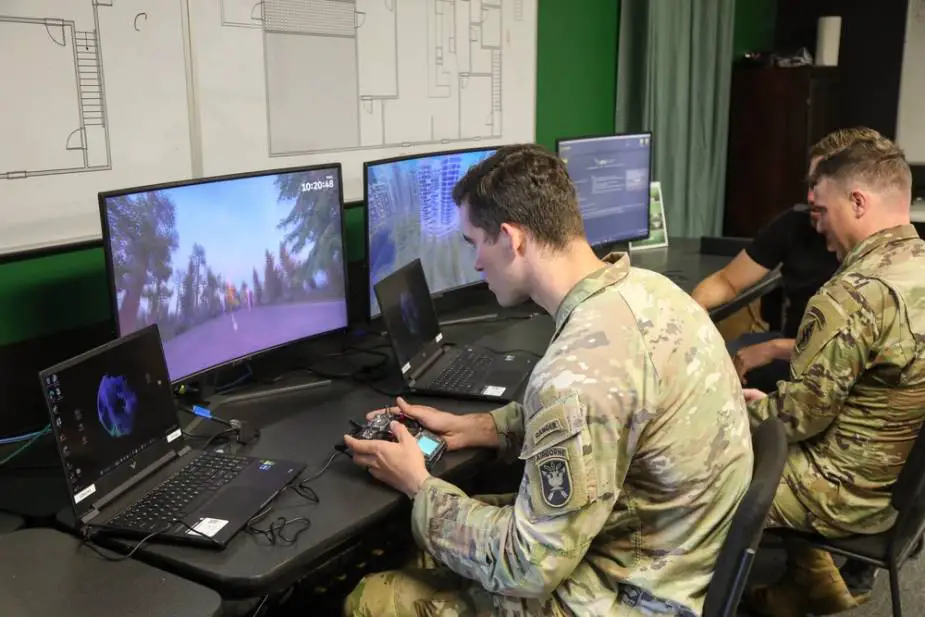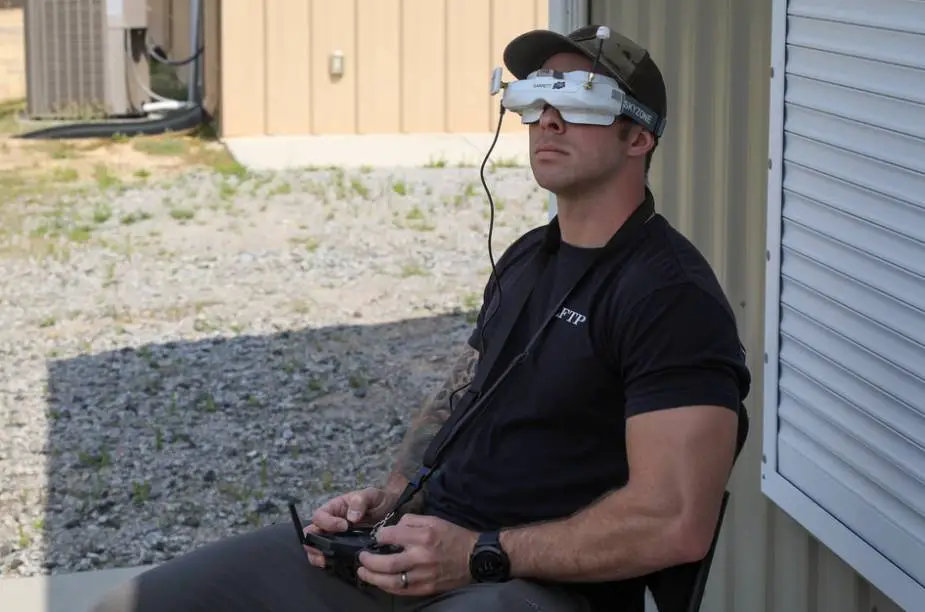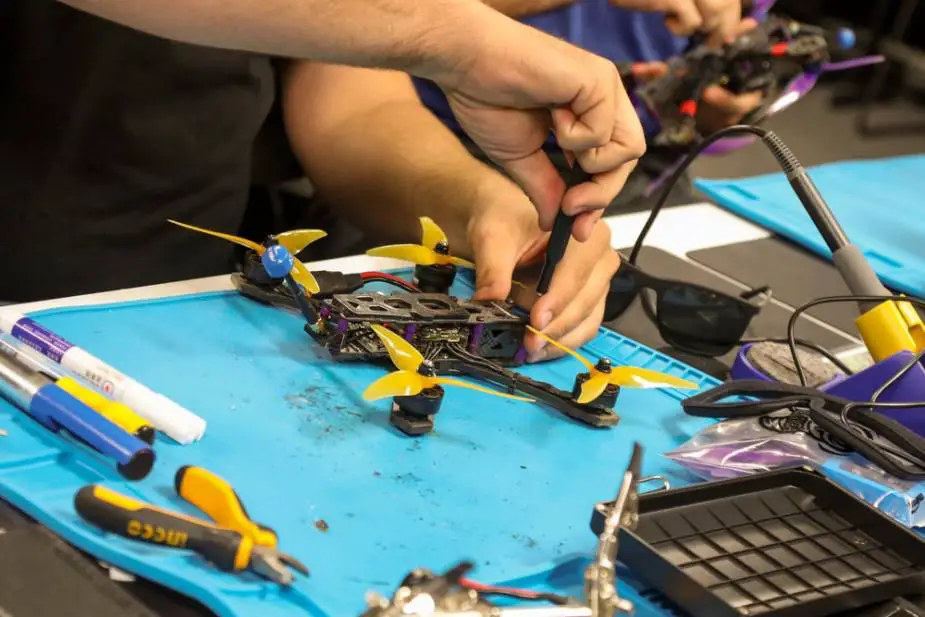U.S. Army 3rd Special Forces Group (Airborne) leads UAS (unmanned aerial systems) experimentation between industry and government on current and relevant technologies. As well as the tactics, techniques, and procedures (TTP) to employ them. This includes the use of flight simulation, current drone technologies, First Person View (FPV) goggle-enabled flight operations, and 3D printing.
Follow Army Recognition on Google News at this link

Testing the simulated flight system during the demonstration for the Organically Designed and Built Small Unmanned Aerial Systems VIP Day, April 5, 2023, at the Oak Grove Technologies Test and Training Center in Hoffman, North Carolina (Picture source: U.S. Army Photo by Sgt. Ashlind House)
The ODB sUAS (Rotary and Fixed Wing) effort is providing U.S. Special Operations Command (USSOCOM) and partner forces advanced education opportunities through academic platform instruction of topics, including meteorology, airspace, aerodynamics, flight simulation, 3D design/printing, preparation for Federal Aviation Administration (FAA) Part 107 certification, and other academic subjects.
“This course allows Special Operations Forces and their partners to gain the ability to be self-sufficient and self-sustaining with little to no military signature,” said Nick, student and 3rd Special Forces Group (Airborne) soldier. Today, at the Oak Grove Technologies Test and Training Center, VIP Day was held to demonstrate what the students have been learning at the Organically Designed and Built Small Unmanned Aerial Systems Pilot Course.
The Organically Designed and Built Small Unmanned Aerial Systems Pilot Course is a four-week course that consist of a combination of classroom academics, UAS flight simulation, and hands-on live flight operations designed to provide novice-level students an academic overview and practical application of the factors that drive Group 1 sUAS (Rotary and Fixed Wing) design and operation.
“Each week of the four-week course students progressively learn how to build and fly their own UAS,” states instructor Jeff Horner. “Week one, students go through their introduction to the course and flight simulator, begin FFA part 107, and spend about 2-3 hours on the flight simulator. Week two, students continue FFA part 107, begin to learn how to build their UAS with practical exercises on soldering and wiring, and continue working on the flight simulator. Week three, students go into components and design analysis, learn flight planning, and begin live flight if their UAS are built. Week four, students execute their practical exercise where they fly their finished UAS through various courses and maneuvers.”

Student observing his flight path through the headset during the demonstration for the Organically Designed and Built Small Unmanned Aerial Systems VIP Day, April 5, 2023 (Picture source: U.S. Army Photo by Sgt. Ashlind House)
The primary objectives of this course are to build a basic academic knowledge, prepare students for the FFA part 107 certification exam, expose students to simulated and live flight operations, and provide graduating students with a basic Drone Kit with an airframe, controller, tools, peripheral equipment, and spare components.
“At the end of the course we leave this course with a small UAS that that we built from scratch,” states Nick. “We also leave with the tools and knowledge we need to continue to build additional UAS.”
Each pilot course culminates in a week-long practical exercise that requires students to apply their knowledge in a tactical and operation-relevant environment.
Responsible application of funding and resources to train and prepare Special Operations Forces (SOF) operators and partner forces, including Australian partners, for current real-world missions. Use of affordable means like simulation and 3D printing concepts to ensure forces can meet global competition challenges. This effort provides the subject matter expertise, resources, and facilities to create an operationally realistic and relevant environment for education and training.
“This course is designed to take anyone with zero prior knowledge of UAS and teach them how to build, program, and fly their system in four weeks,” states instructor Darrell Trueblood.
This class of nine students is the first class to officially graduate from the course, leaving with the knowledge to build, program, and operate their UAS that they build from scratch. This course will continue to teach U.S. Armed Forces members and Partner forces the skills to build and operate unmanned aerial systems as time goes on.

Student working on his UAS during the demonstration for the Organically Designed and Built Small Unmanned Aerial Systems VIP Day, April 5, 2023 (Picture source: U.S. Army Photo by Sgt. Ashlind House)
Defense News April 2023















